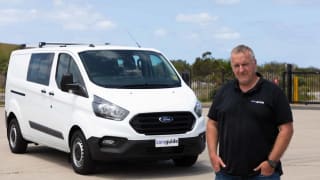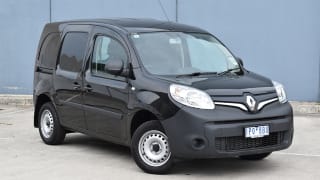The Caddy 5 range offers six variants and two wheelbase lengths comprising Standard (SWB) and Maxi (LWB). Our test vehicle is the Cargo SWB, available with either a 75kW/280Nm entry-level version of its 2.0 litre turbo-diesel with six-speed manual transmission, or premium 90kW/320Nm specification with seven-speed dual-clutch automatic like our example for a list price of $37,990.
It certainly looks like a back-to-basics workhorse, with its hard-wearing grey plastic bumpers, black door handles and mirrors, easy-clean rubber flooring and 16-inch black steel wheels with silver plastic covers, 205/60R16 tyres and a full-size spare.
However, there are numerous features designed to make a working day easier like keyless start, two 12-volt accessory outlets, separate cargo bay locking system, heated door mirrors, reversing camera and rear parking sensors, non-adaptive cruise control, adjustable lumbar support on driver and passenger seats and a nice leather-rimmed steering wheel with height/reach adjustment to name a few.

The four-speaker multimedia system has an 8.25-inch colour touchscreen, two C-type USB ports and multiple connectivity including Apple CarPlay, Android Auto and MirrorLink. The only glaring omission here is AM radio (too bad if you like talkback).
There’s also plenty of safety tech and four option packs comprising Appearance, Tech, Driver Assistance and Comfort Drive Travel Assist enhancements.

















